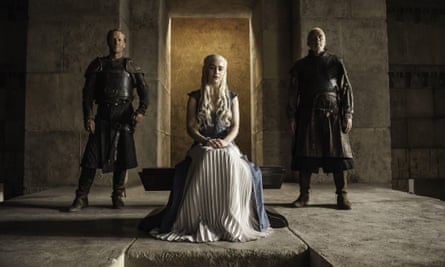The coming of age of the Harry Potter generation, raised on young adult dystopian novels such as The Hunger Games and Divergent, has had a knock-on effect on fantasy fiction and left publishers scrambling to sign up a new generation of female authors.
Fantasy, once seen as fiction’s last male enclave, is now host to an array of female-centric titles – a number of which look set to dominate the genre in 2015.
This spring will see the arrival of three hotly anticipated sequels – Samantha Shannon’s The Mime Order, Jen Williams’ The Iron Ghost and Erika Johansen’s The Invasion of the Tearling – and a number of promising debuts, including Helena Coggan’s The Catalyst and Francesca Haig’s The Fire Sermon.
“There’s been a real sea change in the last five or six years. Not only are more women buying into and reading fantasy but we’re also seeing more female fantasy authors get recognition,” said Julie Crisp, editorial director at Tor UK, Pan Macmillan’s science fiction, fantasy and horror imprint.

“It’s easy to say that Game of Thrones [George R R Martin’s fiction series turned TV behemoth] has made fantasy mainstream and introduced it to people who wouldn’t have picked it up previously – but social media has also played a huge part, because it’s introduced female authors to a wide and growing audience.”
There has been a definite shift towards female writers in the genre, which is likely to snowball in 2015, agreed Kate McHale, science fiction buyer for Waterstones. “People are beginning to realise you can publish a sci-fi or fantasy novel by a female author and these books will sell. Look at [US sci-fi writer] Ann Leckie, who won everything going last year,” she said.
While science-fiction and fantasy fans have always enjoyed female authors such as Ursula Le Guin, Diana Wynne Jones and Ellen Kushner, Crisp believes the current swell in women writers is being led by a generation raised on Harry Potter and young adult fantasy fiction.
“What you’re seeing is that young adult audience, of both sexes, growing up and looking for something similar,” she said. “They’re engaged and informed.”
Lucy Hounsom, whose debut novel, Starborn is published this month, initially wrote the epic fantasy with a male lead, before realising the story worked better with a heroine at its heart.
She is aware her choice may put off some readers. “I know there are some men who won’t buy books with a female lead character or written by a woman, and that’s a shame,” she said.
But other fans are warming to these novels precisely because of the way they address fantasy’s most tired tropes. “I’ve had a lot of women come up and say they’re so pleased to read a book where the heroine is ordinary,” said Erika Johansen, whose best-selling The Queen of the Tearling is due to become a movie starring Emma Watson.

The emergence of fresh female voices may also be helping to get a more diverse range of voices heard. “There are still barriers, but I think the internet has made it much easier to submit stuff and find opportunities beyond the anglophone UK and US market,” said Malaysian author Zen Cho. Her highly anticipated debut, Sorcerer to the Crown, a regency-set fantasy which she jokingly describes as “Edward Said meets Georgette Heyer”, is due out later this year.
“It’s not just a great time to be a woman writing fantasy, it’s also a very exciting time to be a fantasy reader.”
The battle for parity is not yet won, however. “You still get all-women panels at conferences titled Broads with Swords,” said Hounsom. “Twitter is great for raising awareness but [science fiction and fantasy] awards such as the Hugos are still hugely white, male and conservative.”
Female fantasy to look out for
The Iron Ghost by Jen Williams The highly anticipated sequel to the entertaining The Copper Promise, which featured appealing leads with a tendency to put self-interest ahead of heroism.
Pantomime by Laura Lam An addictive tale of a circus apprentice and a runaway nobleman’s daughter with a twist at its heart.
A Darker Shade of Magic by VE Schwab Inventive fantasy centring on a world with four versions of London, each with a different level of magic. One for Neil Gaiman fans.
The Fire Sermon by Francesca Haig Set in a vividly realised world of elite Alphas and their ‘weaker’ Omega twins, it holds a mirror up to our obsession with perfection.

Comments (…)
Sign in or create your Guardian account to join the discussion